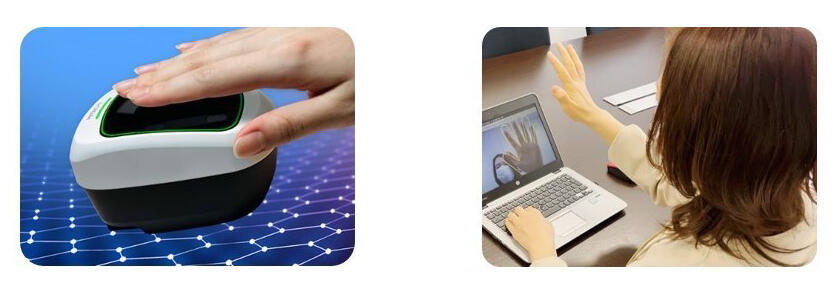Hitachi, Ltd. released on March 9 the Hitachi Contactless Vein Authentication Unit C-1, a new contactless biometric device, and a biometrics software development kit for PC cameras, called the Hitachi Biometric SDK for Windows Front Camera, that provides similar functionality without a specialized device. The device will be provided as a tool to meet the rising demand for contactless personal authentication and cashless payments for a variety of business and consumer needs during the novel coronavirus disease (COVID-19) pandemic, supporting the new normal of lifestyles and working styles. The device is priced at 120,000 yen (excluding tax). The Hitachi Biometric SDK for Windows Front Camera will be provided with price estimates issued on a case by case basis. Moving forward, Hitachi intends to partner with Toshiba Tec Corporation, the largest POS vendor, and Kumahira Co., Ltd., a company with the top share in the security gate industry, to provide biometric systems that include the C-1 for office, logistics, and retail applications, while they also intend to work with a variety of other partners to meet the needs of customers in a wide range of fields.

To date, Hitachi has considered security to be an important domain to support its Lumada business. As part of that understanding, Hitachi has been using their proprietary Public Biometric Infrastructure (PBI) technology to achieve a high level of security by converting biometric data into an undecodable format, rather than using the data itself.
Hitachi has now built on that effort by leveraging their strength in finger vein biometric authentication to offer the contactless C-1 and the Biometrics Authentication SDK. In addition to rising demand for biometrics that can be used empty handed, such as for payment at retail stores and restaurants, access control at event venues and facilities, and member management at leisure facilities, demand is also rising among large scale users for national deployment to chains of supermarkets, convenience stores, and membership facilities. Hitachi has begun offering the C-1 specifically to meet that demand by consumers (B to B to C).
Existing finger vein biometric authentication systems require partial contact, in which the user must place just one finger over the device, there is a limitation which requires operators to limit the number of registered members being authenticated. However, not only is the C-1 contactless, it also allows the use of three fingers, which allows authentication of membership in the millions.
Meanwhile, more and more companies adopt remote work, and employees find themselves working at places outside the office such as home, satellite offices, or co-working spaces, creating a need for realizing high-level biometric security at low cost, rather than relying on authentication with IDs and passwords.
To meet that need, Hitachi is offering software that uses the built in cameras in PCs or external cameras for finger vein biometric authentication for business customers (B to B) in the form of a biometrics SDK. The system enables secure personal authentication including Windows login, single sign on for business systems, and even digital signatures, simply by placing a finger over the camera on a client PC or other environment applicable to the business system. Hitachi is already moving forward to test the software in Europe with an outside partner in order to expand the business overseas.
Hitachi will also partner with Hitachi Consulting Co., Ltd. to provide consulting services from the planning stage to implement digital transformation using biometrics.
This article has been translated by JST with permission from The Science News Ltd.(https://sci-news.co.jp/). Unauthorized reproduction of the article and photographs is prohibited.




